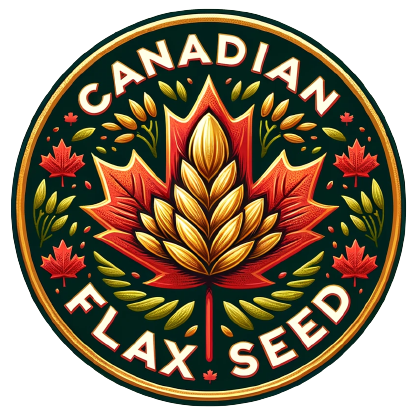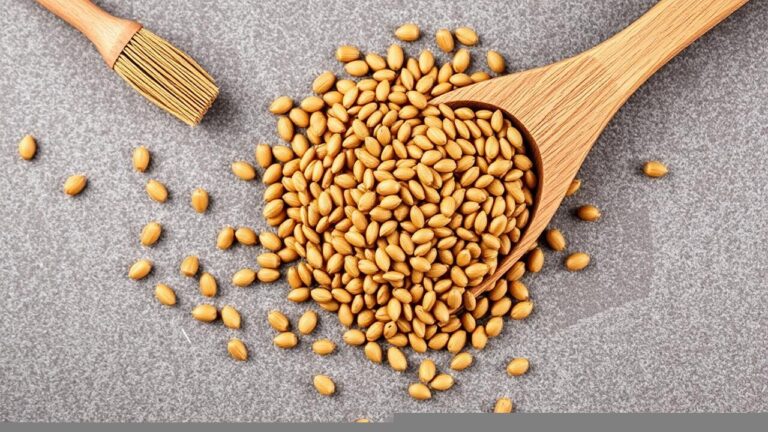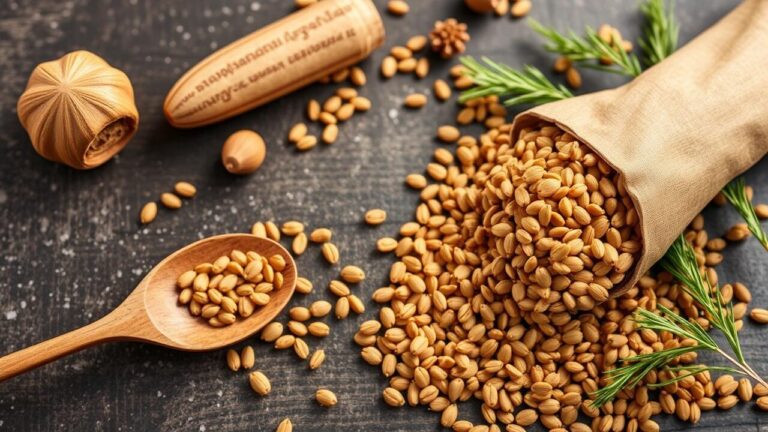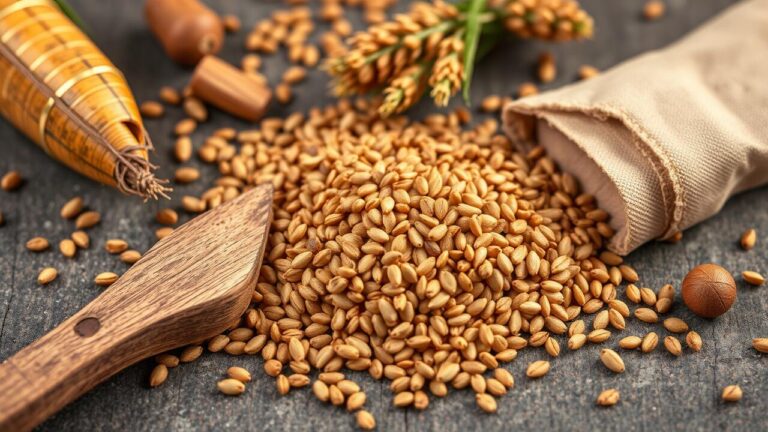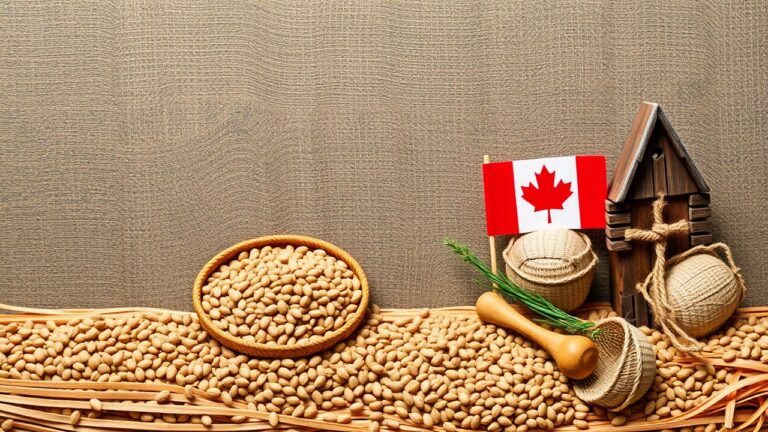Exploring Flaxseeds: Early European Encounters in Canada
Table Of Contents
Exploring Flaxseeds: Early European Encounters In Canada | Exploring Flaxseeds and Early European Encounters in Canada
Key Takeaways
- Investigation of flaxseeds and their historical importance in Europe.
- Initial interactions with flaxseeds in Canada.
- Financial implications of flaxseeds within the Canadian context.
- Plant characteristics and cultivation of flax.
- Health advantages associated with flaxseeds.
- Contemporary applications of flaxseeds in Canada.
Exploring Flaxseeds: Early European Encounters In Canada | Historical Significance of Flaxseeds in Europe
Flaxseeds hold a notable place in the context of European exploration, particularly during early encounters in Canada. As European settlers ventured into western Canada, they brought with them the knowledge of common flax, a crop deeply rooted in western Europe. This process of integrating wild flax into Canadian agriculture exemplified the blend of indigenous knowledge and European agricultural practices. Exploring Flaxseeds: Early European Encounters in Canada reveals how ground flaxseed became a staple for sustenance and trade. The cultivation of flax not only supported the settlers’ diets but also contributed to the broader economic landscape of early Canadian society, marking an essential chapter in the history of flaxseed cultivation and usage.
Exploring Flaxseeds: Early European Encounters in Canada | Origins of Flax Cultivation in Europe
Flax cultivation has its roots in Eurasia, particularly in Eastern Europe, where it was first domesticated over 6,000 years ago. This crop belongs to the flax family, with perennial flax varieties thriving across diverse climates. European settlers brought flax seeds with them to Canada, recognizing the plant’s economic potential and versatility. The establishment of the flax industry in Canada primarily took hold in the Canadian prairies, where the climate proved conducive to its growth. Exploring flaxseeds: early European encounters in Canada illustrates how these seed varieties took on new significance in their adopted environment.
The cultivation of flax in Europe was initially driven by its dual purpose: fiber for textiles and seeds for oil and nutrition. As settlers expanded into the Canadian prairies, they adapted their knowledge of flax farming to local conditions, allowing them to cultivate this valuable crop. The early interactions between European settlers and native lands shaped the future of the flax industry, which rapidly gained prominence in Canada due to its favorable agricultural landscape. By integrating traditional European practices with Indigenous knowledge, the stage was set for a thriving flax farming culture in Canada.
Cultural Uses of Flaxseeds in Early European Societies
Flaxseeds, particularly from the flax plant (Linum usitatissimum), played a significant role in the cultural practices of early European societies. These cultures utilized flax for a variety of purposes beyond its nutritional value. The fibers derived from flax were used in textiles, contributing to clothing and household linens. In regions such as New France and Upper Canada, flax cultivation became an integral part of daily life, reflecting the adaptation of European settlers to the diverse agricultural landscapes of the Americas. Exploring Flaxseeds: Early European Encounters in Canada reveals how these societies embraced this versatile crop, which was highly valued for both its economic and cultural contributions.
In many instances, flaxseeds were intertwined with traditional beliefs and practices. Communities in Montréal and throughout the continent regarded flax as not just a crop but as a symbol of resilience and resourcefulness. The health benefits attributed to flax were recognized early on, leading to its incorporation into various remedies and dietary practices. Furthermore, the exploration of the Arctic introduced flax to new cultures, emphasizing its adaptability and significance across regions. The support of research from organizations such as the Canadian Institutes of Health Research has helped underscore the historical and contemporary importance of flax in promoting health and wellness.
Early Encounters with Flaxseeds in Canada
The exploration of flaxseeds in Canada is intertwined with the continent’s early European encounters, particularly during Newfoundland’s establishment as a key location for trade. French settlers initially brought flax cultivation to the fur-country regions, recognizing its versatility and economic potential. As the Anglo-French wars unfolded, the geographical spread of these settlers influenced the adoption of flaxseed cultivation across the Canadian Rockies and into various territories on the North American continent. This agricultural practice not only catered to local needs but also opened avenues for trade with the American continent, highlighting the significance of flax in early colonial economy and its roots in European traditions. Exploring Flaxseeds: Early European Encounters in Canada reveals a complex tapestry of cultural exchange and agricultural development, showcasing the intricate relationship between geography and economic pursuits in this era.
First European Settlers and Flax
The arrival of French explorers in Canada marked a significant moment in the history of flax cultivation. These explorers, influenced by the practices of the Gauls, sought to understand the agricultural potential of the New World. In regions like Québec and Saskatchewan, they introduced flax to local farming, hoping to replicate the success seen in their European homeland. Exploring Flaxseeds: Early European Encounters in Canada reveals how these efforts were motivated by the Indo-European people’s long-standing relationship with this versatile crop.
As settlers established their presence, the cultivation of flax became an integral part of the agricultural landscape. The French recognized the value of flax not only for its fibers but also for its nutritional seeds. This marked a transition in Canada’s agricultural practices, as the settlers incorporated flax production into their farming systems. Exploring Flaxseeds: Early European Encounters in Canada illustrates the merging of Indigenous techniques and European knowledge, setting the stage for future developments in the flaxseed industry.
Indigenous Knowledge of Flax Cultivation
The indigenous people of Canada have a rich history of flax cultivation long before European settlers arrived. Communities in regions like Innisfail, Alberta, utilized flaxseed for various purposes, recognizing its value in their diets and cultures. By exploring flaxseeds: early European encounters in Canada, we can trace the knowledge and practices developed by these communities. They understood the benefits of the flaxseed plant, which contains essential nutrients that contribute to overall health.
Flax cultivation was deeply integrated into the lives of indigenous peoples, offering not just food but also materials for textiles and other uses. As Canadian flax growers began to adopt these practices, they found that the Canadian environment offered unique conditions for flaxseed development. The historical context of exploring flaxseeds: early European encounters in Canada reveals how traditional methods informed modern Canada’s flax industry, showcasing a blend of indigenous wisdom and contemporary agricultural practices.
Economic Impact of Flaxseeds in Canada
The historical journey of flax in Canada is deeply intertwined with early European encounters, particularly during the time of French explorers who first documented the pale flax they encountered. The word flax took on new significance as exploration led to the cultivation of this versatile crop, ultimately impacting Saskatchewan flax development significantly. As flax evolved in Canada, it gained prominence in the agricultural landscape, supported by initiatives from the flax commission that aimed to enhance ground flaxseed supplies. Canadian recommendations, including its presence in the Canadian food guide, highlight the nutritional benefits of flaxseeds, emphasizing their role in modern diets. The legacy of exploring flaxseeds during early European encounters resonates through the thriving industry that has emerged, affirming its economic importance in contemporary Canada.
Trade and Export of Flaxseed Products
The trade and export of flaxseed products have deep roots in the historical context of Exploring Flaxseeds: Early European Encounters in Canada. Early European travelers were intrigued by the potential of flax in the Canadian climate. Although the challenges of the harsh Canadian winter posed obstacles, flax production soon became integrated into Canadian society. The adaptability of flax cultivation impressed many, leading to increased interest from European view points on the economic viability of Canadian flaxseed exports.
Canadian institutes played a crucial role in refining flax production techniques to suit the unique environmental conditions. The focus on improving yields and quality set the stage for Canada to emerge as a significant supplier of flaxseed to western countries. As flax began to flourish, the industry not only benefitted from the favorable Canadian climate but also from the historical knowledge and practices passed down through generations, marking a pivotal moment in the journey of Exploring Flaxseeds: Early European Encounters in Canada.
| Country | Export Volume (Metric Tons) | Main Use | Year |
|---|---|---|---|
| Canada | 155,000 | Food Products | 2022 |
| United States | 50,000 | Animal Feed | 2022 |
| European Union | 75,000 | Biodiesel Production | 2022 |
| China | 30,000 | Health Supplements | 2022 |
Development of the Flaxseed Industry
The establishment of the flaxseed industry in Canada can be traced back to the early European settlers, who brought with them knowledge of flax cultivation from their homeland. These early explorations often involved travel through uncharted territories, where they encountered the flax plant thriving in the natural world. As they began to cultivate it on Canadian soil, they discovered its potential not only as a textile source but also as a nutrient-rich food product. This overseas discovery laid the groundwork for Canada to emerge as a major flax exporter, capitalizing on the increased demand for flaxseed in various markets.
As time progressed, flax producers in Canada began to refine their cultivation techniques, focusing on optimizing the growth of the flax plant. This encouraged new explorations into better farming practices and the establishment of processing facilities. The increasing popularity of flaxseed within the health food industry further stimulated the development of the flaxseed industry, making it a vital player in Canada’s agricultural economy. Exploring Flaxseeds: Early European Encounters in Canada thus marks a significant chapter in both the history of Canadian agriculture and the broader narrative of global flax trade.
Botany and Growth of Flax
The journey of exploring flaxseeds during the early European encounters in Canada reveals much about the plant’s characteristics and cultivation methods. Flax growers, particularly in the untouched-by-European-settlers prairies, have played a crucial role in developing the industry, often inspired by the knowledge gained from Roman civilizations. Extensive explorations of flax varieties, such as brown flax and unretted flax, have informed modern agricultural practices. The Saskatchewan flax grower community, supported by the flax council, strives to maintain these traditions while adapting to contemporary demands. Different cultures have embraced flax cultivation, showcasing its versatility and significance in regions where it has flourished. Exploring Flaxseeds: Early European Encounters in Canada highlights the rich history and ongoing evolution of this important crop.
Flaxseed Plant Characteristics
The flax plant, with its beautifully-blue blooming flowers, captures attention and signifies its rich agricultural history. As a significant crop, it thrived in the Atlantic colonies and was essential for both fibers and seeds. Present-day France is among the countries that played a crucial role in popularizing flax cultivation in Europe, paving the way for good flax sales in the international market. Canadian producers have embraced the plant, utilizing broad experience gained from early European encounters to enhance growth and production techniques.
Flax crops thrive in well-drained soil and benefit from a temperate climate, making regions of Canada particularly suitable for cultivation. The early Russian expedition showcased the potential of flax in various agricultural contexts, demonstrating its adaptability and economic importance. Exploring Flaxseeds: Early European Encounters in Canada reveals how the plant became a staple not only for its fibers but also for its nutritional value, leading to its enduring legacy in both historical and modern agriculture.
Optimal Conditions for Flax Cultivation
Flax cultivation thrives in specific conditions that contribute to its growth and yield. The interior explorations conducted by early European settlers revealed that the subcontinent’s climate, particularly in the Saskatchewan context, favored flax growth. Flax requires well-drained soil, moderate temperatures, and adequate moisture to produce quality seeds and flax fibre. These favorable conditions were crucial for the success of a provincial project aimed at enhancing local agriculture through the introduction of various crops, including blue flax.
Optimal growing conditions also include timely planting and harvesting. The southern approach to cultivating flax aligns with these requirements, allowing for effective management of the crops. Knowledge of the plant’s needs spread across different countries as communities shared their agricultural practices. The experience of the Saskatoon refugee community in early flax cultivation serves as a testament to the plant’s adaptability and importance during the period of Exploring Flaxseeds: Early European Encounters in Canada.
- Well-drained soil is essential for optimal flax growth.
- Moderate temperatures help in the development of healthy plants.
- Adequate moisture levels are vital for producing quality seeds and fiber.
- Timely planting ensures proper growth cycles are maintained.
- Effective management of crops includes proper harvesting techniques.
- Knowledge sharing among communities enhances flax cultivation practices.
- Adaptability of flax to various conditions supports its importance in agriculture.
Nutritional Benefits of Flaxseeds
Flaxseeds have long been recognized for their impressive nutritional profile, a fact celebrated by various cultures throughout history. The early history of flax cultivation can be traced back to the Indo-European people, who valued the seeds for both their dietary and medicinal properties. In similar contexts, the American Mediterranean and French exploitation of flax also highlighted its versatility. Remarkable travelers and scholars noted the plethora of health benefits associated with consuming flax, leading to several studies that confirmed its rich content of omega-3 fatty acids, fiber, and antioxidants. The integration of flax into diets facilitated by the First Nations knowledge further enriched its significance, illustrating a profound connection between culture and nutrition. Exploring Flaxseeds: Early European Encounters in Canada reveals how these seeds have transcended time and geography to become a staple in various diets.
Health Properties of Flaxseeds
Flaxseeds have long been praised for their health properties, drawing attention from various nations throughout history. Exploring Flaxseeds: Early European Encounters in Canada highlighted these seeds as a vital resource for early settlers and recent newcomers. The nutritional profile of flaxseeds includes omega-3 fatty acids, fiber, and lignans, which contribute to heart health and digestive wellness. This journey of discovery mirrors the experiences of early expeditions in the region, guiding individuals toward the numerous benefits these seeds offer.
The incorporation of flaxseeds into diets has evolved over centuries, revealing their importance beyond mere sustenance. Their rich nutrient content aligns with the growing emphasis on health and wellness in the modern world. As saskflax works to promote these seeds, the historical context of flax farming and its applications provides insight into how these tiny seeds can elevate one’s diet. Each voyage into the nutritional advantages of flaxseeds reflects the enduring legacy of Exploring Flaxseeds: Early European Encounters in Canada, illuminating their relevance in contemporary health discussions.
Flaxseeds in Traditional European Diets
Throughout the years, flaxseeds played a pivotal role in the diets of many European societies. During the 17th century, European newcomers to Canada began to recognize the nutritional value of this native wildflower. These seeds became an essential source of nourishment, as well as a versatile ingredient in various culinary practices. Exploring Flaxseeds: Early European Encounters in Canada reveals how these newcomers adopted flaxseeds into their diets, accommodating their need for sustenance in unfamiliar territories.
Research indicates that flaxseeds were not only consumed for their health benefits but also integrated into traditional recipes that highlighted their versatility. The journeys made by early settlers to the shores of Canada marked the beginning of a thriving relationship with this nutrient-rich resource. As these newcomers sought to replicate familiar diets, flaxseeds emerged as a likelike staple, fortifying their meals and providing essential nutrients at a time when food security was paramount.
| Country | Traditional Use | Health Benefits |
|---|---|---|
| Germany | Flaxseed bread | Rich in omega-3 fatty acids |
| France | Flaxseed oil in dressings | High in alpha-linolenic acid |
| Scotland | Flaxseed porridge | Promotes digestive health |
| Norway | Flaxseed cakes | Supports heart health |
Modern Uses of Flaxseeds in Canada
Flaxseeds have found a significant place in modern Canadian life, reflecting a blend of historical roots and contemporary uses. As many newcomers establish themselves in various areas, especially in the north and south, they continue to embrace flaxseeds not only for their nutritional benefits but also for their versatility in cooking and baking. The resurgence of interest in health foods has led to the development of local markets and centres focusing on flaxseed products. This evolution is a continuation of the legacy from the time of early European encounters, where flax held an important context in both agriculture and cuisine, dating back to the century of exploration. The cape of exploration into this ancient grain showcases the enduring relevance of flaxseeds in Canadian diets today.
- Flaxseeds are increasingly used in smoothies for a nutritional boost.
- Many Canadians incorporate flaxseed meal into their baking, enhancing the fiber content of bread and pastries.
- Flaxseed oil is popular as a salad dressing ingredient, valued for its heart-healthy omega-3 fatty acids.
- The seeds are often sprinkled on yogurt or oatmeal for added texture and nutrition.
- Canadians use flaxseeds as a plant-based egg substitute in vegan recipes.
- Local artisans have created a variety of flaxseed-based snacks, tapping into the health food market.
- There is a growing trend of using flaxseeds in gluten-free products, catering to those with dietary restrictions.
Conclusion
The journey of Exploring Flaxseeds: Early European Encounters in Canada unveils the rich tapestry of this ancient crop’s significance. Early European settlers approached flax cultivation with varied intentions, influenced by their cultural practices and the local knowledge shared by Indigenous communities. This project highlights the discovery and application of flax in both historical and contemporary contexts, reflecting how recent immigrants have contributed to the evolution of flaxseed practices. Strategic planning around this versatile crop continues to shape its role in the economy and nutrition, bridging ancient traditions with modern innovations.
FAQS
What were the implications of early European encounters with flax (linum usitatissimum) during their travels and explorations in Saskatchewan, Canada, and how did these encounters accommodate newcomers?
Early European encounters with flax (linum usitatissimum) significantly influenced overland exploration in Saskatchewan, Canada, where remarkable travelers documented their findings. These accounts of beautiful country enriched the world flaxseed narrative, showcasing beautifully-blue blooming flax and the potential of flaxseed samples. The sighting of flax in these regions was a pivotal moment in the agricultural history of Canada, as flaxseed contains valuable nutrients that have been utilized since present day France. Clearly, the initial observations of flax created opportunities to accommodate newcomers interested in cultivating this beneficial crop.
How did flaxen traits of early European sightings influence the understanding of flax during their arctic exploration in Canada?
The remarkable traveller accounts from arctic exploration in Canada demonstrate that flax, which wasn’t widely known before these encounters, started garnering interest among Europeans. The French and other explorers documented their travels, pulling attention to the plant’s potential and its adaptability in different climates, which ultimately contributed to its cultivation and use back in Europe.
How did the cultural significance of flaxen traits observed by French explorers impact their perception of flax while documenting European sightings in Canada?
The cultural significance of flaxen traits observed by French explorers played a crucial role in shaping their perception of flax. They noted that flax wasn’t just a plant but started to take on agricultural and commercial importance. The early European sightings helped document the various uses of flax, which fostered interest in cultivating it among the newcomers in Canada.
How did French explorers document the early uses of flax during their encounters in Canada?
The French documented various uses of flax, highlighting its importance as a fiber source. These records show how flax start played a critical role in local economies as well as in the daily lives of Indigenous peoples. The insights gained from these encounters influenced their understanding and appreciation of flax and its applications.
In what ways did the French influence the cultivation and use of flaxseeds in Canada during their early encounters?
The French played a significant role in the introduction and cultivation of flaxseeds in Canada, which not only contributed to agricultural practices but also affected trade and local economies. Their encounters facilitated the exchange of knowledge regarding flax, leading to its increased prominence in Canadian agriculture and its uses in textiles and other industries.
How did the interactions of early explorers with flaxseeds impact the cultural exchanges between the indigenous populations and the French in Canada?
The interactions between early explorers and indigenous populations regarding flaxseeds led to significant cultural exchanges. The French, during their encounters, recognized the value of flaxseeds not only as a crop but also in the context of local traditions and practices. This understanding helped foster cooperation and knowledge sharing between the French and the indigenous communities, influencing agricultural practices and the use of local resources.
How did the introduction of flaxseeds by the French shape agricultural practices in Canada?
The French played a crucial role in introducing flaxseeds to Canada, which significantly influenced agricultural practices in the region. Their knowledge and methods of cultivation allowed for the successful growth of flax, leading to its integration into local farming systems and contributing to the development of the agricultural economy in Canada.
How did the early introduction of flaxseeds by the French influence Canadian agriculture?
The introduction of flaxseeds by the French played a significant role in shaping agricultural practices in Canada, as they brought knowledge and techniques that enhanced local farming. This influence enabled farmers to diversify their crops and contributed to the adaptation of new agricultural methods in the region, ultimately impacting the economy and food production in Canada.
What role did the French play in the introduction and cultivation of flaxseeds in Canada during their early encounters?
The French played a significant role in the introduction and cultivation of flaxseeds in Canada during their early encounters, significantly impacting agricultural practices and promoting the use of flax in local economies.
How did the French explorers document their findings on flaxseeds in Canada during their early encounters?
The French played a crucial role in documenting their observations and findings on flaxseeds during their early encounters in Canada. Their records included detailed accounts of cultivation techniques, uses of flaxseeds for both food and textile production, and interactions with indigenous populations, which highlighted the significance of flax in the context of Canadian agriculture and trade.
